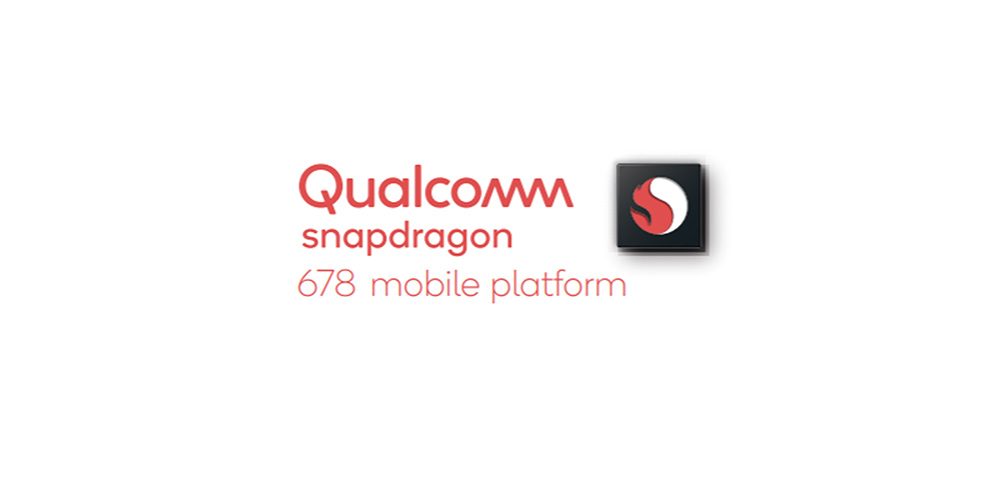Apple Inc recently announced that it was in the process of developing its chipsets for Apple devices. With the American tech giant on its way to usurping Qualcomm as the largest chipset manufacturer in the world, Qualcomm has come back with a new processor of its own. The company just announced and launched its newest Snapdragon 678 processor. The processor uses the 11nm process, and the company believes that the chip will be an even larger success than the Snapdragon 675. Read on to learn more about the Snapdragon 678, its features and what this means for the smartphone industry.
Qualcomm Snapdragon 678 Faster, and Reliable
When compared to the hugely popular Snapdragon 675, the 678 offers several prominent performance upgrades. It allows for complicated and advanced photo and video capture and enables high-speed connections. Additionally, the chipset can also revolutionize the art of gaming by enabling immersive entertainment experiences. If that wasn’t all, the chip also supports longer-lasting battery life and more reliable connections. The Kyro 460 CPU powers the chipset, allowing it to clock speeds as high as 2.2 GHz.
Similar to the 675, the new chip also comes with an Adreno 612 GPU, allowing it to support dynamic videography and photographic capabilities. The new processor comes equipped with Qualcomm’s Spectra 250L ISP technology, enabling the capture of images at share-worthy detail and colour. The processor supports cameras up to 48MP on the back and 16MP dual ones on the front. Additionally, the processor’s capabilities also back video recording at 4K, along with other features such as slow-mo, portrait mode, and five-time optical zoom.

Other Features
- The Snapdragon 678 supports faster graphics rendering, drops fewer frames and can capture sharp visuals at very high framerates.
- Most of these features are a result of the combination of both the Kryo 460 CPU cores and Adreno 612 GPU.
- Qualcomm has also worked on the processors used by top game engines, such as Unreal Engine 4, Messiah, Unity and NeoX.
- Along with the process comes the Snapdragon X12 LTE modem, which supports download speeds as high as 600Mbps. The modem is also good enough to power upload speeds as high as 150Mbps.
- Additionally, Qualcomm’s newest modem integrates well with all major cellular modes and also supports Licensed Assisted Access.
- The modem’s engineering allows it to power fast connections even in areas that are congested and busy.
- The Snapdragon 678 SoC is an upgrade on the 675 that powers mid-range phones such as the Redmi Note 7 Pro and Vivo U20. With the new chipset, Qualcomm aims to recapture the market it lost to the Helio G chips made by MediaTek in 2020.
Changes and Upgrades
Since the Qualcomm Snapdragon 678 also relies on the ARM Cortex-A76 and A-55 cores much like the 675, experts believe that the processor would have the same IPC rate. Hence, there might not be a massive jump in overall performance when compared to the 675. However, the newer processor does offer users more space and smoothness in operations. Both chips use the 11nm process, but the 678 features a 2.2GHz Kryo CPU whereas the 675 features a 2.0 GHz CPU. Hence, users can expect a smoother interface and better speeds while using apps. However, both chips utilise the same ISP and Modem, and both feature Quick Charge 4+ capabilities. The Spectra ISP enables the 678 to support Multi-Frame Noise Reduction features on its 48MP camera. It also powers Zero Shutter Lag on either a single 25MP camera or split between two 16MP cameras.
The processor can capture 4K video at 1080p at 30FPS. Additionally, it also supports the HEVC format and can take videos at slow-motion mode at 120 FPS. The maximum resolution supported will be 2520×1080, with a 10-bit depth of colour. While smartphones in the range the chipset wishes to target seldom comes with 10-bit displays, it is comforting to know that the processor supports such a feature.
The Snapdragon 678 also supports Qualcomm’s 3rd-gen AI Engine with the help of the Hexagon 685 DSP. Hence, it is safe to say that the 678 will create small ripples in the mid-range category in 2021, if not massive shockwaves. Primarily, the new chip might help Qualcomm gain the consumers it lost to MediaTek this year.

Being a cinephile with a love for all things outdoorsy, Athulya never misses a chance to chase inspiring stories or poke fun at things, even when the subject is herself. Currently pursuing a degree in mechanical engineering, she is someone innately interested in technical and scientific research. Music reviews and op-eds define her as they allow her to explore different perspectives. Though sometimes she thinks she makes more sense playing the guitar than she does while writing.